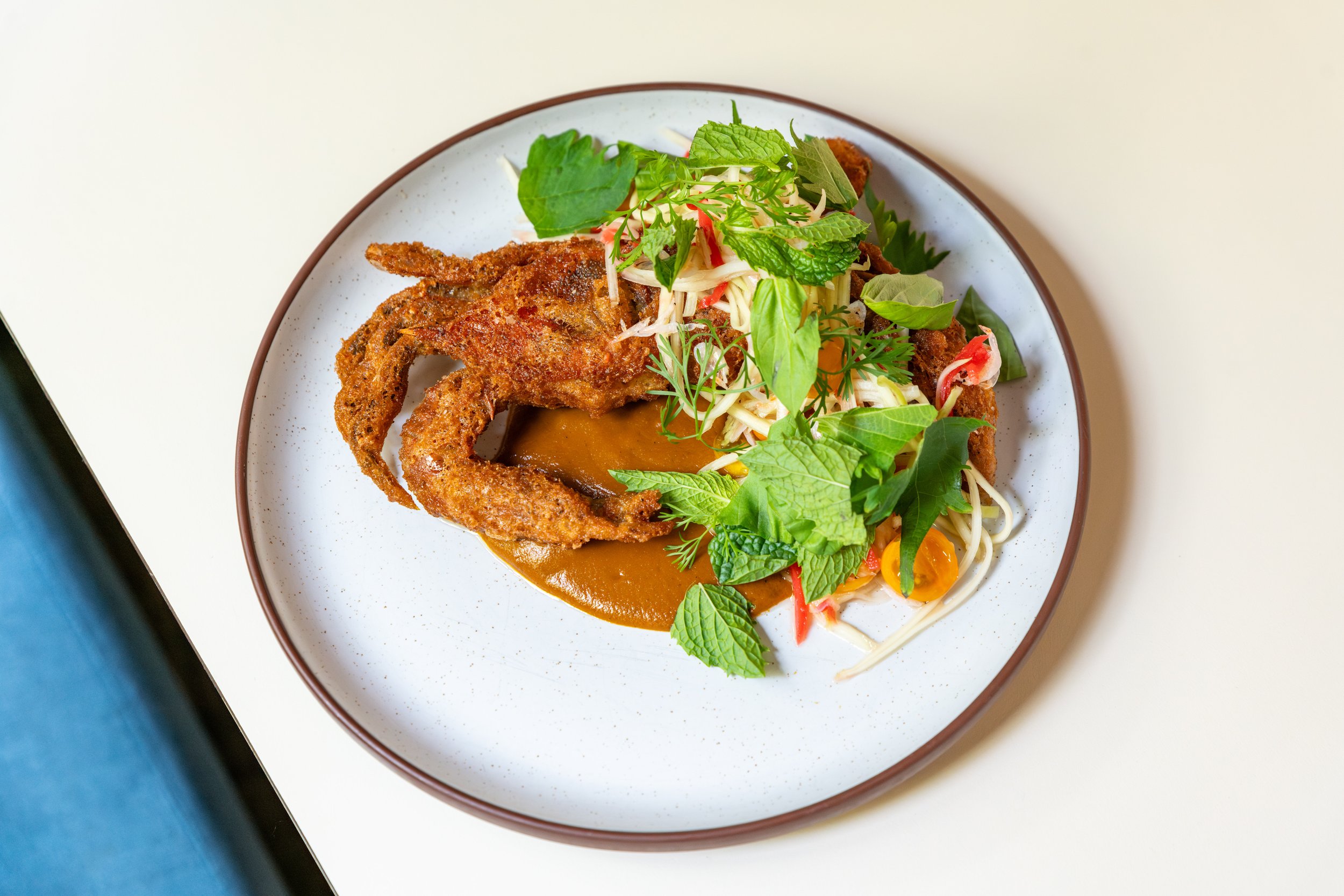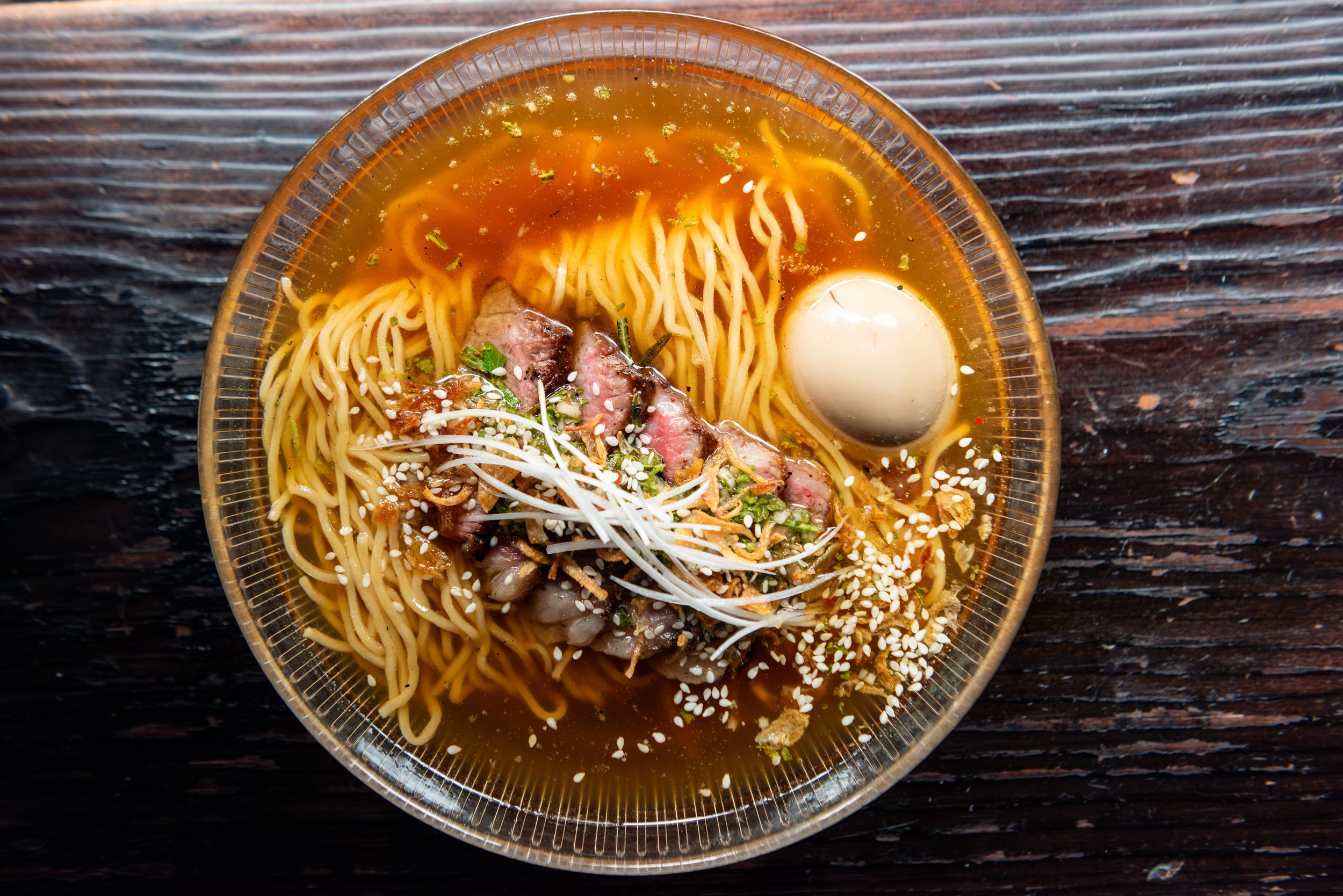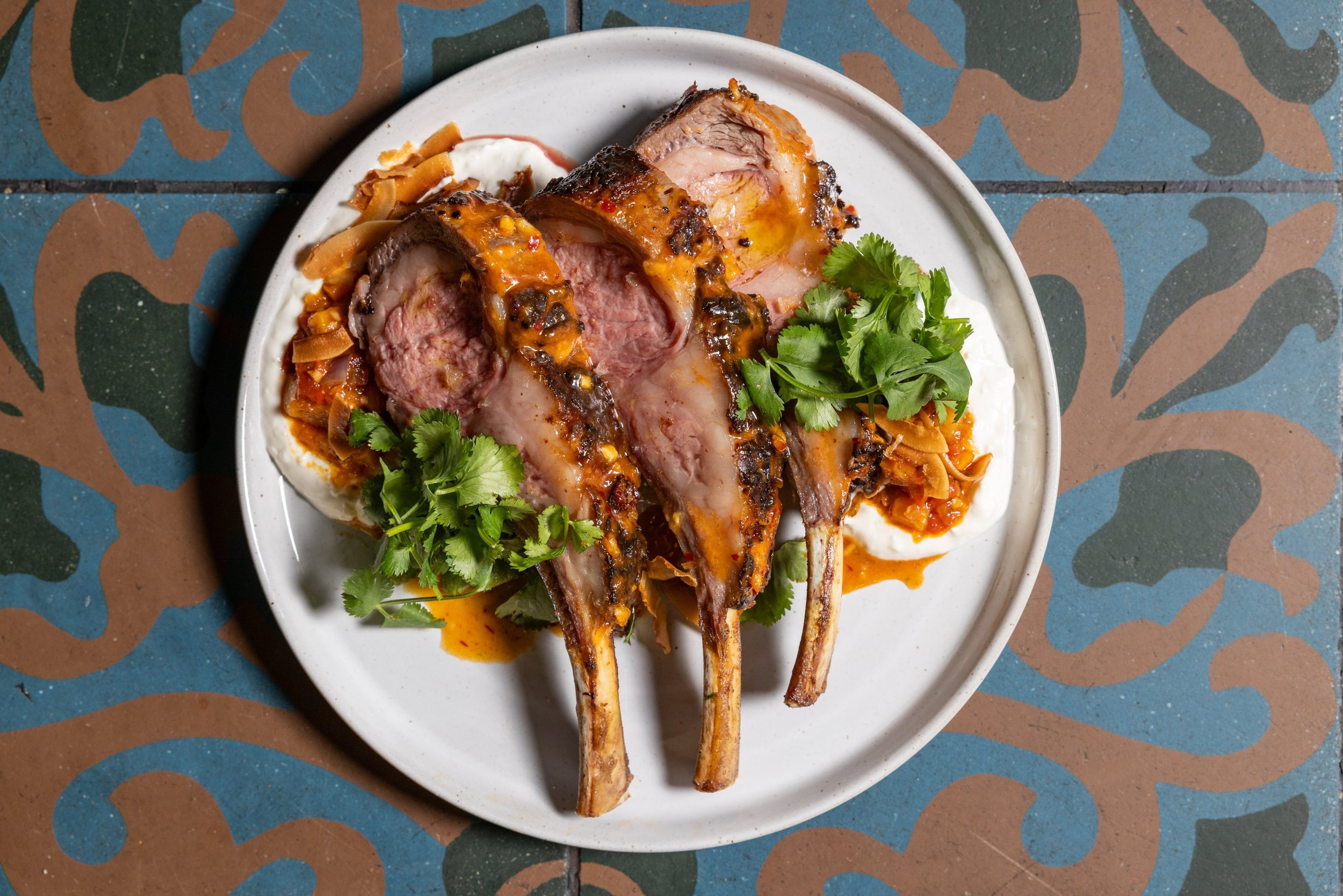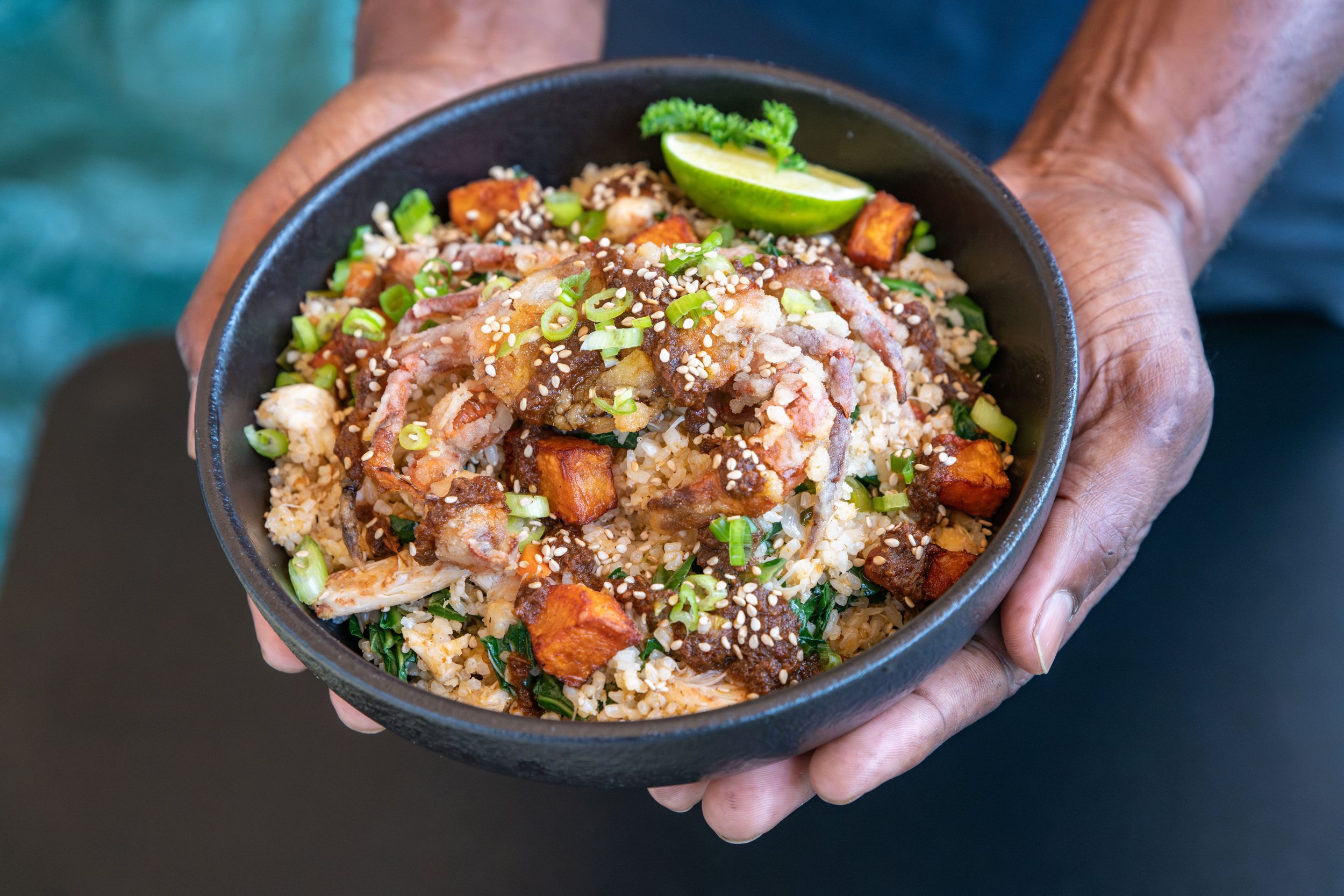When Life Gives You Lemons, Char the Hell Out of Them
Chef Ryan Moore has upcycled more than 5,000 pounds of lemon rind at Sababa in D.C.. What are you doing with your scraps?
Photo: Alexa Bendek
Chef Ryan Moore braces his halloumi plate with a marmalade made from the charred remains of lemons used at his two adjoining restaurants, Sababa, and Bindaas in Washington, D.C. His technique for upcycling the nearly 400 lemons he goes through daily is inspired by traditional Middle Eastern black lime, or loomi. “I’ve used loomi in the past to make shakshuka, but they’re difficult to source and pretty expensive,” says Moore.
Moore needed a cheaper, bulk method for mimicking the flavor of loomi for his 600 daily covers, and he landed on charred lemons. “When I was chef de cuisine at Rogue 24, we used charred lemon peel in some of the dishes, and I found it to be bright and citrusy, but not bitter.”
Since opening Sababa in spring 2018, Moore has repurposed more than 5,000 pounds of lemon rinds with six to eight rinds yielding a cup of marmalade. Since his team makes so much of it, he serves it at big events and has thought about retail to maximize the power of his biggest “waste” item.
Make Sababa's Charred Lemon Marmalade:
Blister spent lemon shells. Moore uses a hybrid gas and wood-fired grill to achieve smoky flavor without sacrificing precise temperature control.
When completely dry, remove from heat, cool to room temperature, and blend a portion of the lemons to a fine powder.
Combine the powder with diced charred and fresh lemon peels, honey, and lemon juice; simmer until reduced by three-quarters.
Balance the acidity with a big hit of olive oil.







